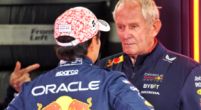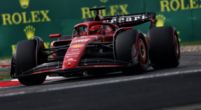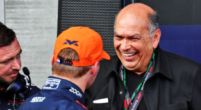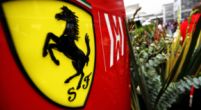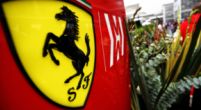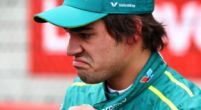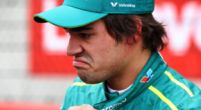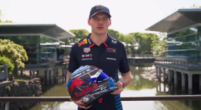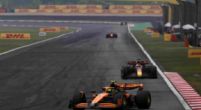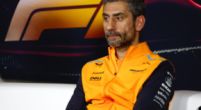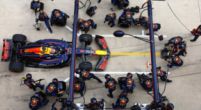Column
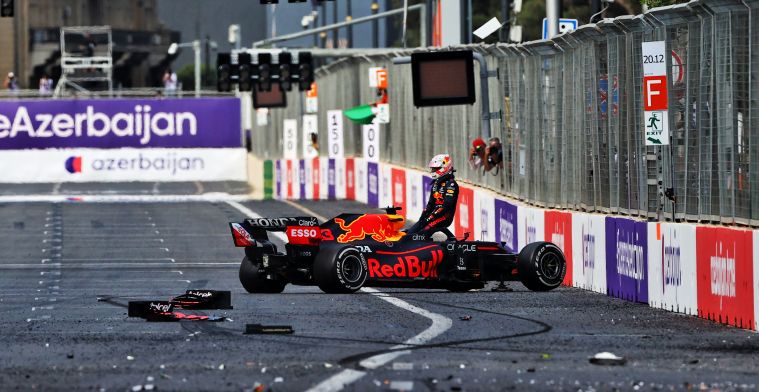
Column | Race in Baku wasn't the first time Pirelli tyre's were put under pressure
Well, what to say. Only one thing has really overshadowed Sergio Perez’s first win as a Red Bull Racing driver, and that’s the Pirelli tyres. Since 2011, Pirelli have supplied the Formula 1 teams with tyres, and with their contract running until 2023, they’re here to stay. Lance Stroll and Max Verstappen’s high-speed crashes down the main straight are under investigation and could've been caused by a tyre failure or debris. With the Dutch driver a key figure in the championship fight, this incident could have serious repercussions.
Before the Azerbaijan Grand Prix, Pirelli stated that the hardest of the three compounds they were taking to the race (the C3 tyre) could last up to 40 laps. However, Aston Martin’s Stroll crashed having completed just 30 laps on that tyre, suffering a left-rear puncture and being sent hurtling into the wall at a dangerous rate of knots.
Just 17 laps later, Verstappen's RB16B suffered the exact same fate. He had only completed 34 laps on his set of hard tyres, but that didn’t prevent a failure that saw him catapulted into the wall at around 200kph.
The safety of F1 has been of high priority in recent years, with the addition of the halo device proving vital with Romain Grosjean’s crash in Bahrain last year. However, if tyre failures can occur just like that, the future of Pirelli will be cast into doubt.
Of course, it could happen to any tyre provider, and Pirelli themselves believe debris played a major role in Verstappen’s crash at the very least, but it is concerning that events like these have happened before.
Examples of other tyre failures:
Perhaps the most notable incident before this year’s Azerbaijan Grand Prix, was the British Grand Prix in 2020. Lewis Hamilton limped home on three wheels to take victory, only narrowly holding off the best efforts of Verstappen after suffering a failure to his front left tyre.
Pirelli said that the failures caused that day were due to "extremely long use" on a demanding Silverstone circuit. Hamilton was the noteworthy incident, but his Mercedes teammate Valtteri Bottas, Carlos Sainz of McLaren and Daniil Kyvat of AlphaTauri also experienced problems.
Hamilton suffered his issue on the final lap of the race, but was able to hang onto victory, whereas his teammate wasn’t so fortunate. Bottas’ puncture with two laps to go saw him drop out of the points and fall to P11. Sainz also suffered his puncture on the last lap and dropped from fourth to 13th in the race which could’ve cost McLaren dearly in the Constructors’ Championship.
Kyvat’s incident was initially deemed a driver error after it appeared he clipped a kerb, but upon review, it seemed to be a failure as well.
Whilst Mercedes and McLaren could’ve executed a better strategy to avoid these punctures, they only tried a long stint due to the information fed to them by Pirelli, and in the means of safety, they should err on the side of caution when releasing the data on how long each tyre will last.
Later in 2020, at the Tuscan Grand Prix, Stroll suffered a major tyre failure whilst driving for Racing Point. At turn nine on lap 43, Stroll’s tyre suddenly punctured, and he was sent across the gravel and into the wall to bring out the second red flag of that race.
Another example of Pirelli incidents happened at the 2016 Spanish Grand Prix with Daniel Ricciardo suffering a puncture two laps from the finish despite stopping for new tyres on three separate occasions before this. He also suffered a tyre failure on lap three of the Chinese Grand Prix just two races prior to the incident in Barcelona.
Later that year at the Austrian Grand Prix, Ferrari’s Sebastian Vettel, who was leading the race, suffered a right-rear explosion that sent him careering into the barriers, and ended his race. Vettel also suffered a failure at the 2015 Belgian Grand Prix.
What could Pirelli do better?
It’s no doubt a hard task to not only produce and provide each different compound of tyre, but also decide how long each tyre will last on a given race day, taking into account the circuit and the weather. So, Pirelli don’t have it easy. However, safety is of the utmost importance in F1 so a look into their analysis of data needs to take place. Even if that means reducing the estimated life of a tyre by two, or three laps just to be cautious, it would likely result in less big incidents of tyre failures.
Tyre production for F1 is hard, but if Pirelli want to remain as the sport’s tyre producer, they’ll need to up their game. Their role in Formula 1 is to create tyres that create pitstops and multiple strategies but are most importantly safe.
How did Pirelli get into F1?
With all this talk of Pirelli’s mishaps, how did they actually get into the sport? Well, they became the official supplier of Formula 1 tyres in 2011, taking over that responsibility from Bridgestone who announced they’d be leaving at the end of the 2010 season.
Pirelli soon introduced their style to F1, such as coloured bands on the tyres to differentiate between the different compounds. For 2020, teams received two sets of hard tyres, three sets of mediums and eight sets of soft tyres per weekend. Pirelli decided which of their five compounds would be used at each race, depending on external circumstances. It’s a system that has worked, but it has prevented tyre failures.
Previous tyre providers in F1:
In the early years of F1, the likes of Dunlop, Firestone, Continental and Goodyear all supplied tyres for the sport. Bridgestone began supplying tyres from 1997, and were the sole provider between 2007 and 2010. Michelin entered the sport in 2001, but exited after just six years.
What now?
Well, Pirelli look set to stay. Nobody else has come forward and declared serious interest in challenging Pirelli for the role, so it appears as though the company founded in 1872 will be supplying tyres for the foreseeable future.
One thing does need to change though; their ability to make a tyre that doesn’t puncture before it’s meant to.
Hopefully, with the advancements of modern technology, the safety of the tyres will match the safety of the halo.

